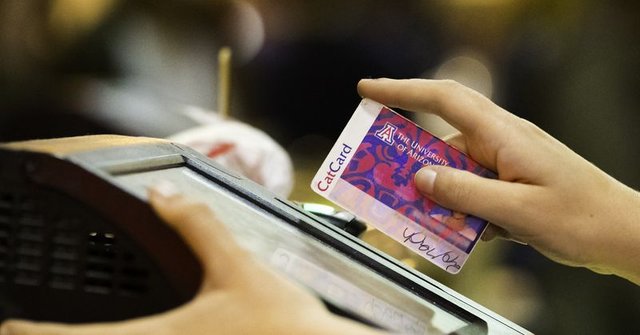University of Arizona tracks student ID cards to detect who might drop out
The University of Arizona is tracking freshman students’ ID card swipes to anticipate which students are more likely to drop out. University researchers hope to use the data to lower dropout rates. (Dropping out refers to those who have left higher-education entirely and those who transfer to other colleges.)
The card data tells researchers how frequently a student has entered a residence hall, library, and the student recreation center, which includes a salon, convenience store, mail room, and movie theater. The cards are also used for buying vending machine snacks and more, putting the total number of locations near 700. There’s a sensor embedded in the CatCard student IDs, which are given to every student attending the university.
“By getting their digital traces, you can explore their patterns of movement, behavior and interactions, and that tells you a great deal about them,” Sudha Ram, a professor of management information systems who directs the initiative, said in a press release.
Researchers have gathered freshman data over a three-year time frame so far, and they found that their predictions for who is more likely to drop out are 73 percent accurate. They also have plans to give academic advisers an online dashboard to look at student data in real time.
Those who have shrinking social circles and a lack of a routine might be more likely to drop out
With data from students’ activity, academic performance, and financial aid, the university creates lists every quarter of freshman students most likely to drop out and shares it with its staff. Those who are more likely to drop out might have shrinking social circles and a lack of fairly established patterns of behavior, according to Ram. The hope is that the university will pinpoint which students need more support from advisers to stay on.
“As early as the first day of classes, even for freshmen, these predictive analytics are creating highly accurate indicators that inform what we do to support students in our programs and practice,” said Angela Baldasare, assistant provost for institutional research at the university.
The University of Arizona’s retention rates in 2017 rose to 86.5 percent for residents and almost 89 percent for international students. As a reference, Columbia University, Yale, and the University of Chicago still lead with the highest retention rate of 99 percent, while the national average trails behind at 78 percent, according to the most recent numbers.
Ram likens the predictions to Amazon’s machine learning endeavors, saying, “We think by doing these interventions by the 12th week, which is when students make up their mind, you’re sort of doing what Amazon does—delivering items you didn’t order but will be ordering in the future.”
There’s no disclosure that card swipes and payments can be monitored by the university
Some schools already use student ID cards to monitor student activity, but it could be argued that this level of analyzing students’ social interaction data, which includes timestamps and locations, potentially violates students’ privacy. After all, on the CatCard policy site, there’s no disclosure that swipes and payments can be monitored by the university, as pointed out by Gizmodo. We’ve reached out to the university about its disclosure policies.
Still, algorithms can sometimes be wrong and biased. Ram admits, “We live in an era where you shouldn’t be generalizing about ‘groups of people. You should be personalizing solutions at the individual level.” She calls the data she’s analyzed “just a signal.”
Hi! I am a robot. I just upvoted you! I found similar content that readers might be interested in:
https://youngtribune.com/tech-and-science/university-of-arizona-tracks-student-id-cards-to-detect-who-might-drop-out/